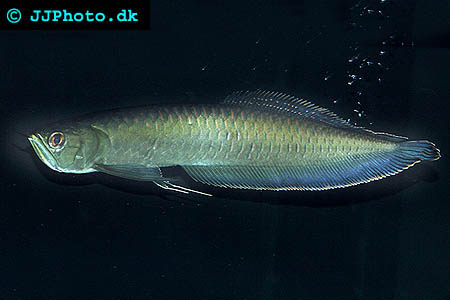Sugar Glider
There are six different species of glider in Australia, and the sugar glider is just one of them. There are not different types of sugar glider, however.
Glider species include:
Glider species include:
- Sugar glider
- Feathertail glider
- Squirrel glider
- Greater glider
- Mahogany glider
- Yellow-bellied glider
Hamsters
Type:
- Warm blooded mammal in the rodent family.
- Nocturnal, up at night, sleeps during the day.
- The hamster is the most popular of the smaller rodents kept as a pet in many countries today.
- The most popular variety of hamster, kept as pets and used in laboratories, are the golden (Syrian) hamsters. They come in cinnamon, cream and white.
Characteristic:
- Hamsters are friendly and when handled often, they become quite tame.
- They are delightful to watch as they go about their daily housekeeping, food storing and exercise on their wheel.
- Hamster who has been handled frequently from a very young age usually remain docile and rarely bite.
- They have very poor eyesight but a keen sense of smell and excellent hearing.
- The Syrian (or Golden) Hamster, cannot be kept with other hamsters after 8–10 weeks of age. They may viciously fight resulting in either serious injury or death.
- Hamsters cannot see very well and they are not as sure footed and steady on their feet as some other animals.
Size:
- An adult hamster weighs roughly 90 - 150 gm. They are small about 3-5 inches (mouse like) and can fit in the palm of your hand.
Housing:
- Common caging used are 10-gallon tanks, Habitrails, stainless steel, and wire cages (some having multiple levels, with a plastic cat litter pan bottom for easy cleaning).
- Cages should at least be 20 square inches of floor area per hamster, and a cage height of at least 6 inches.
- Common beddings used are toilet paper, shredded paper, processed corn cob, CareFRESH™, Sani-chips®, Gentle Touch™ and wood chips.
Clean-up and Grooming:
- Hamsters should have their cage cleaned weekly. Un-cleaned cages can get quite smelly. Bedding should be kept clean.
- Hamsters do not require grooming, they take care of their own grooming needs.
Feeding:
- Hamsters can be fed hamster mix, found at the pet store or grocery store, lab blocks, sometimes called rodent diet or rodent chow, fruits (introducing slowly to avoid diarrhea), Cheerios and bread can be given as a treat as can dog biskets.
- Water should always be provided using a hanging bottle (found in pet stores).
Exercise and Life Expectancy
- Give a hamster an exercise wheel and hamster balls it will take care of its own exercise needs.
- About 3 years.
Health Problems and Gestations
- Hamsters are under stress they can get diarrhea, which is called "wet bottom". Wet bottom is diarrhea, which looks almost like pee, shortly after they contract this they usually die.
- The gestation period of the common hamster is 19-20 days and is 15 days for the Golden. They will have 4-12 babies at a time. Hamster babies are called hamster pups.
Origin:
- Hamsters originated in the Middle East and southeastern Europe.
Sugar Glider
Type:
- Small arboreal marsupial, which are a silvery blue gray color with a darker stripe on the back.
- They are members of the same family as kangaroos, wombats, opossums and Tasmanian devils.
Characteristic:
- The sugar glider is a nocturnal animal.
- In the wild, sugar gliders are playful with their colony, but wary and protective of intruders.
- An untame glider requires lots of time and patience.
- They are extremely active and very social animals and do not like to live alone.
- Sugar Gliders "glide" by leaping off of something.
- Their teeth are sharp, and while they do not usually bite, they can if they feel frightened or threatened.
Size:
- Length: 6.3-7.5 inches (16-20 cm.)
- Weight: 100-160 grams.
Housing:
- should be provided with plenty of things to jump and leap off of (a minimum of 24 x 24 inches, by 36 inches high).
- A wire cage, wire should be no more than ½ inch wide, is best to allow the cage to breathe.
Clean-up and Grooming:
- The sugar glider is a very clean little creature. If you keep their cages clean, they have almost no odor.
- Their nails should be kept well trimmed.
Feeding:
- Sugar gliders are omnivorous.
- Fruits and the insects should be fed high quality food such as commercial cricket food, and dusted with a complete vitamin/mineral supplement.
Exercise and Life Expectancy:
- Provided you supply enough living space.
- 8-15 years.
Health Problems and Gestation:
- In captivity, the Sugar Glider is susceptible to back leg paralysis.
- In captivity, females can have up to three litters a year.
- Female sugar gliders have pouches, their young will stay in the pouch for about the first 70 days.
Origin:
- Native to Australia, Tasmania, New Guinea, and the neighboring islands of Indonesia.
The Asian Arowana or Golden Arowana (Scleropages formosus) is considered an endangered species. Care should be taken to follow the law in purchasing and transporting them. Asian Arowana fish generally can grow to about 36 inches, and are often much more expensive then the other Arowana species. These are well known and popular South East Asia where they are believed to bring luck. Feeding them healthy Guppies, Gold Fish, Frogs, or Shrimp makes a good stable diet. The temperature is best kept between 75 and 86 degrees Fahrenheit (24-30 C), and a pH level between 7.0 and 7.5 are advisable.
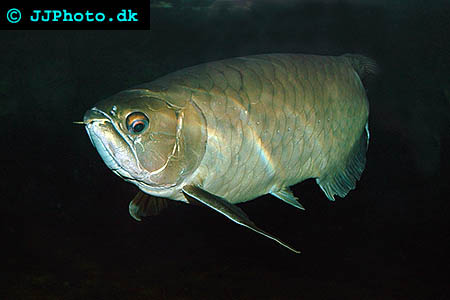
Asian Arowana - Scleropages formosus.
The Silver Arowana (Osteoglossum bicirrhosum) comes from the Amazon Basin. They can grow to around 48 inches in the wild, and are usually the cheapest Arowana species. Silver Arowana can be more jumpy then the other species and more than one Silver Arowana have jumped to their death in a badly covered aquarium.
Silver Arowana may take a while to adjust to non-live food. Sometimes to the brink of starvation. Feed them meaty food like, fish, crab, or Shrimp (try to avoid the salt). This Arowana Fish thrives in temperatures between 75 and 86 degrees Fahrenheit (24-30 C), and pH between 6 and 7. Young Silver Arowana should not be in a tank shorter then 36 inches/ 90 cm, and as they get older, 48 inches/ 120 cm though when your Arowana fish reaches 15 inches/ 40 cm they will need a much larger tank. These Arowana Fish can become aggressive towards similar species and should be kept alone in the aquarium tank unless it is very big. They can also be kept with larger catfish and a few other species. They are a definitely predator and will eat smaller fish. As juveniles, they may be suitable for smaller home aquarium, though with growth, they are likely to outgrow the home and become suitable only for large public aquariums.
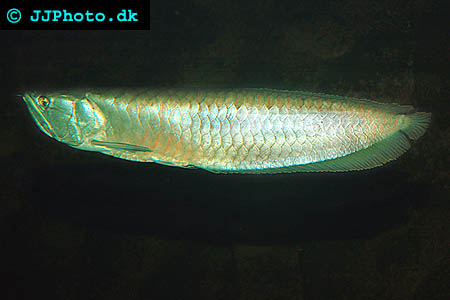
Silver Arowana - Osteoglossum bicirrhosum.
The Spotted Arowana (Scleropages leichardti) is mostly found from Southern Australia. They can grow to around 36 inches/ 90 cm (they do however only seldom reach this length in an aquarium), and are less sought after then the Asian Arowana. They are also called Dawson River Saratoga, Southern Saratoga, Spotted Barramundi, Australian Spotted Arowana, and Leichardti Saratoga. They tend to stay closer to the bottom than other Arowana fish species. This means that it sometimes is possible to keep them with Silver Arowana fish. As far as food, they are capable of eating most things that will fit their mouth (crickets, Hikari pellets, insects, etc). This Arowana fish species prefers a temperatures between 75 and 86 degrees Fahrenheit (24-30 C), and a pH level between 6.5 and 7.5. They may be territorial and aggressive.
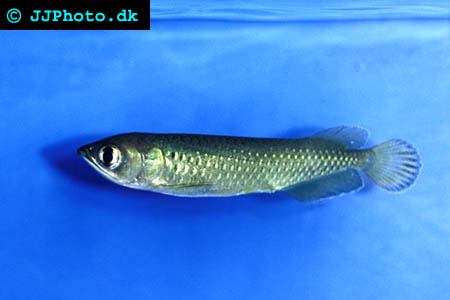
Spotted Arowana - Scleropages leichardtii.
The Northern Arowana (Scleropages jardini) is found mostly in Northern Australia. They can grow to around 36 inches/ 90 cm. They are also called Northern Saratoga, Jardine Saratoga, Gulf Saratoga, Australian Gold or Pearl Arowana and Jardini Saratoga. They eat similar food as the Spotted Arowana (Southern Australia), and are less likely to jump out of the tank than other species (though they might). This variety of Arowana Fish is best kept at a pH level of 6.0 - 7.5 and temperatures of 72 to 80 degrees Fahrenheit (22-27 C). While less aggressive then others, they are still predators and will likely eat anything that will fit in their mouths. They will eat Crayfish, Fish, Insects, and pellets with a little effort to get them started.
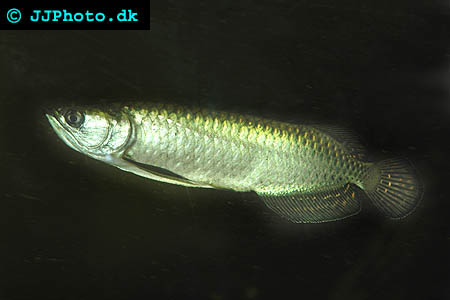
Northern Arowana - Scleropages jardinii.
The African Arowana (Heterotis niloticus) comes from western and central Africa. They grow up to around 40 inches/100 cm. They are more rare than other Arowana Fish species. They are predators known to eat small fish. This Arowana Fish prefers temperatures between 75 and 86 degrees Fahrenheit (24-30 C) and a pH level of 6.7 to 7.5 (7.0 preferred). They eat shrimp, fish, live worms, and insects in captivity.
The Black Arowana fish (Osteoglossum ferreirai) comes from South America in the Rio Negro basin. They grow up to around 40 inches / 100 com, though they seldom reach this length in captivity. The Black Arowana fish eat live fish, large insects, spiders, Tubifex worms, and may also eat pellets and flakes (not all specimens accept pellets and flakes). Young Arowana fish of this species tend to be delicate, though older fish tend to be more hardy. They prefer a pH level of 5-7 with 6.4 being the optimum level, and temperatures between 75 and 86 degrees Fahrenheit (24-30 C).
The Asian Arowana or Golden Arowana (Scleropages formosus) is considered an endangered species. Care should be taken to follow the law in purchasing and transporting them. Asian Arowana fish generally can grow to about 36 inches, and are often much more expensive then the other Arowana species. These are well known and popular South East Asia where they are believed to bring luck. Feeding them healthy Guppies, Gold Fish, Frogs, or Shrimp makes a good stable diet. The temperature is best kept between 75 and 86 degrees Fahrenheit (24-30 C), and a pH level between 7.0 and 7.5 are advisable.

Asian Arowana - Scleropages formosus.
The Silver Arowana (Osteoglossum bicirrhosum) comes from the Amazon Basin. They can grow to around 48 inches in the wild, and are usually the cheapest Arowana species. Silver Arowana can be more jumpy then the other species and more than one Silver Arowana have jumped to their death in a badly covered aquarium.
Silver Arowana may take a while to adjust to non-live food. Sometimes to the brink of starvation. Feed them meaty food like, fish, crab, or Shrimp (try to avoid the salt). This Arowana Fish thrives in temperatures between 75 and 86 degrees Fahrenheit (24-30 C), and pH between 6 and 7. Young Silver Arowana should not be in a tank shorter then 36 inches/ 90 cm, and as they get older, 48 inches/ 120 cm though when your Arowana fish reaches 15 inches/ 40 cm they will need a much larger tank. These Arowana Fish can become aggressive towards similar species and should be kept alone in the aquarium tank unless it is very big. They can also be kept with larger catfish and a few other species. They are a definitely predator and will eat smaller fish. As juveniles, they may be suitable for smaller home aquarium, though with growth, they are likely to outgrow the home and become suitable only for large public aquariums.

Silver Arowana - Osteoglossum bicirrhosum.
The Spotted Arowana (Scleropages leichardti) is mostly found from Southern Australia. They can grow to around 36 inches/ 90 cm (they do however only seldom reach this length in an aquarium), and are less sought after then the Asian Arowana. They are also called Dawson River Saratoga, Southern Saratoga, Spotted Barramundi, Australian Spotted Arowana, and Leichardti Saratoga. They tend to stay closer to the bottom than other Arowana fish species. This means that it sometimes is possible to keep them with Silver Arowana fish. As far as food, they are capable of eating most things that will fit their mouth (crickets, Hikari pellets, insects, etc). This Arowana fish species prefers a temperatures between 75 and 86 degrees Fahrenheit (24-30 C), and a pH level between 6.5 and 7.5. They may be territorial and aggressive.

Spotted Arowana - Scleropages leichardtii.
The Northern Arowana (Scleropages jardini) is found mostly in Northern Australia. They can grow to around 36 inches/ 90 cm. They are also called Northern Saratoga, Jardine Saratoga, Gulf Saratoga, Australian Gold or Pearl Arowana and Jardini Saratoga. They eat similar food as the Spotted Arowana (Southern Australia), and are less likely to jump out of the tank than other species (though they might). This variety of Arowana Fish is best kept at a pH level of 6.0 - 7.5 and temperatures of 72 to 80 degrees Fahrenheit (22-27 C). While less aggressive then others, they are still predators and will likely eat anything that will fit in their mouths. They will eat Crayfish, Fish, Insects, and pellets with a little effort to get them started.

Northern Arowana - Scleropages jardinii.
The African Arowana (Heterotis niloticus) comes from western and central Africa. They grow up to around 40 inches/100 cm. They are more rare than other Arowana Fish species. They are predators known to eat small fish. This Arowana Fish prefers temperatures between 75 and 86 degrees Fahrenheit (24-30 C) and a pH level of 6.7 to 7.5 (7.0 preferred). They eat shrimp, fish, live worms, and insects in captivity.
The Black Arowana fish (Osteoglossum ferreirai) comes from South America in the Rio Negro basin. They grow up to around 40 inches / 100 com, though they seldom reach this length in captivity. The Black Arowana fish eat live fish, large insects, spiders, Tubifex worms, and may also eat pellets and flakes (not all specimens accept pellets and flakes). Young Arowana fish of this species tend to be delicate, though older fish tend to be more hardy. They prefer a pH level of 5-7 with 6.4 being the optimum level, and temperatures between 75 and 86 degrees Fahrenheit (24-30 C).
